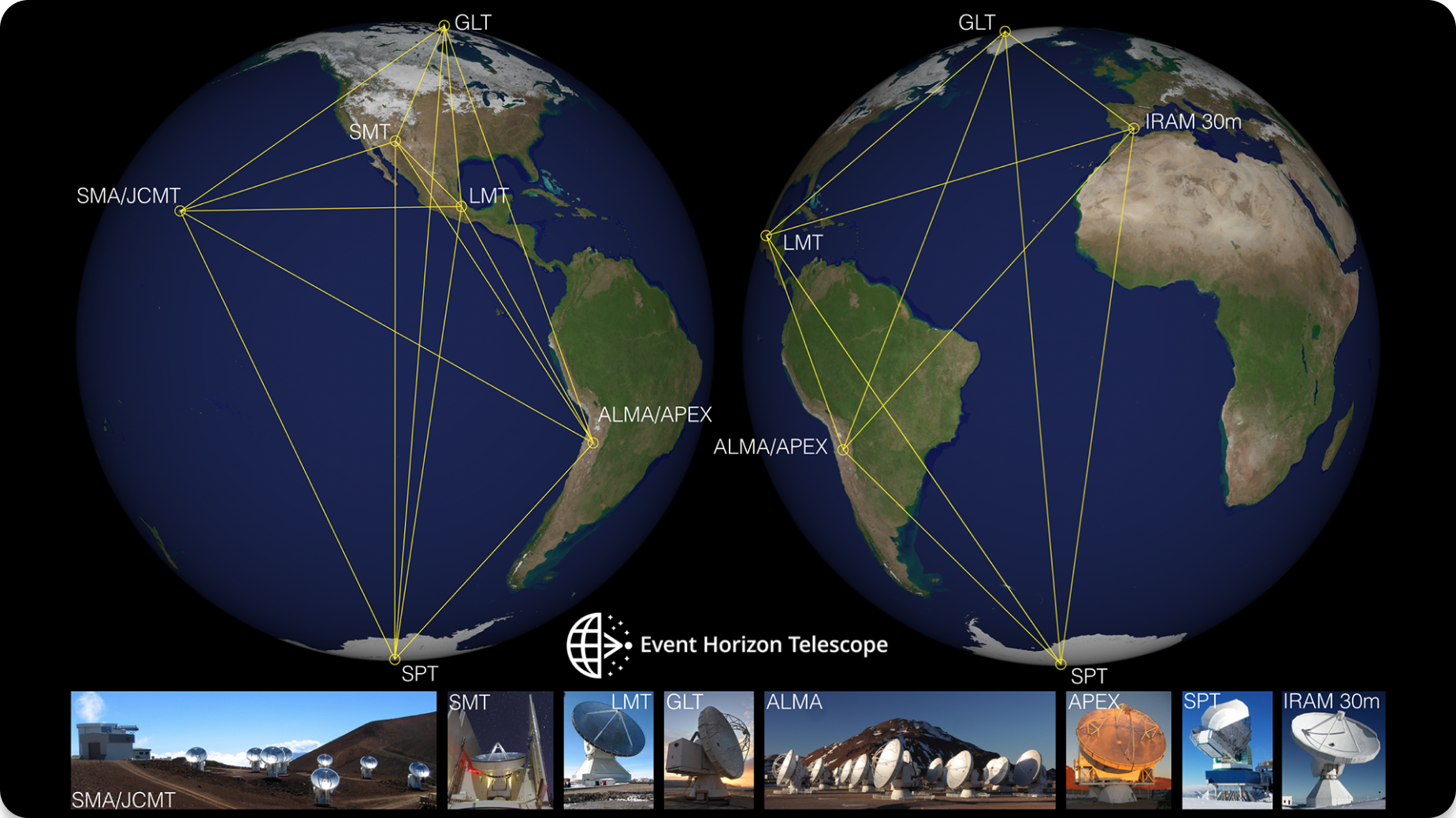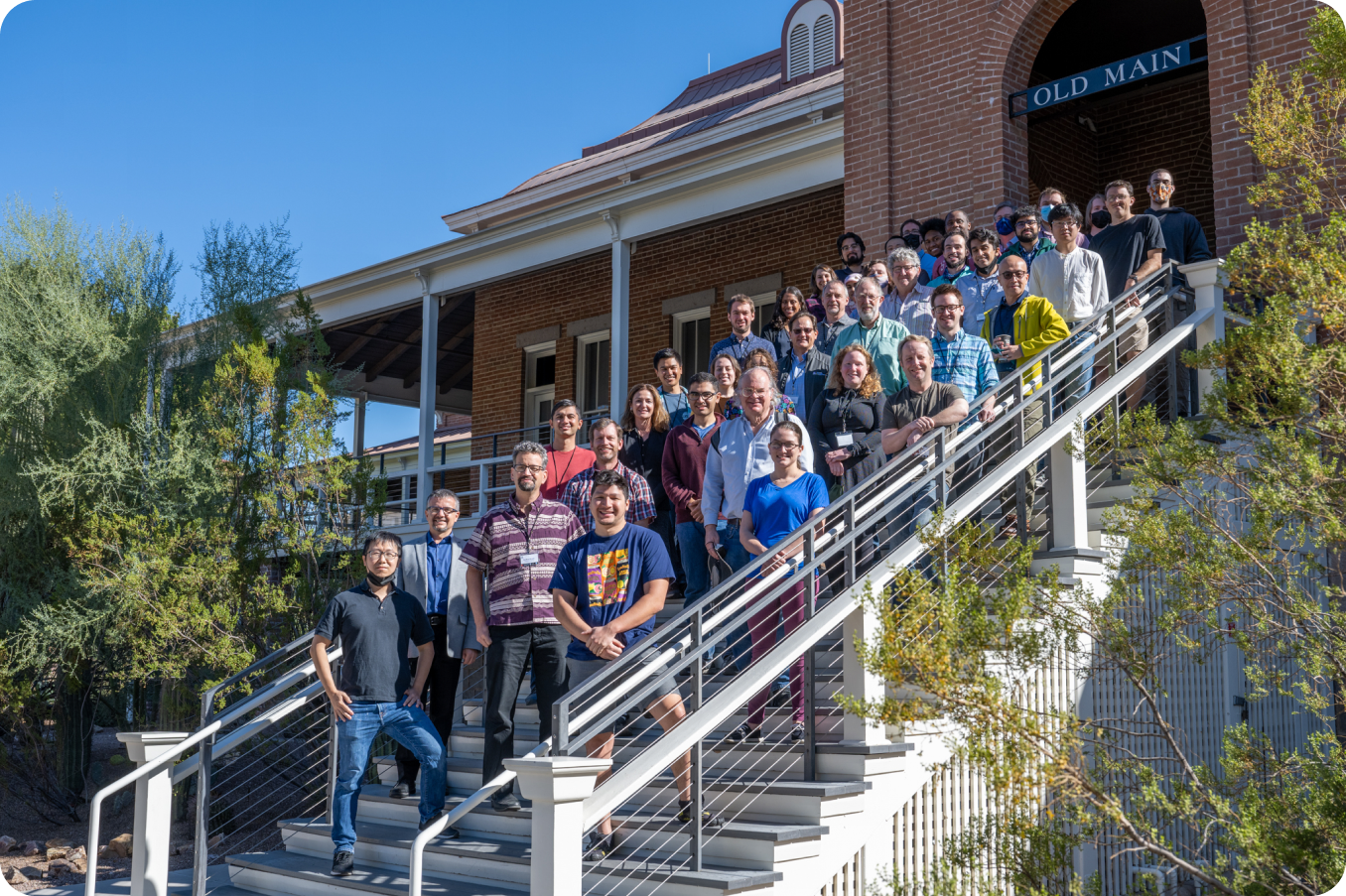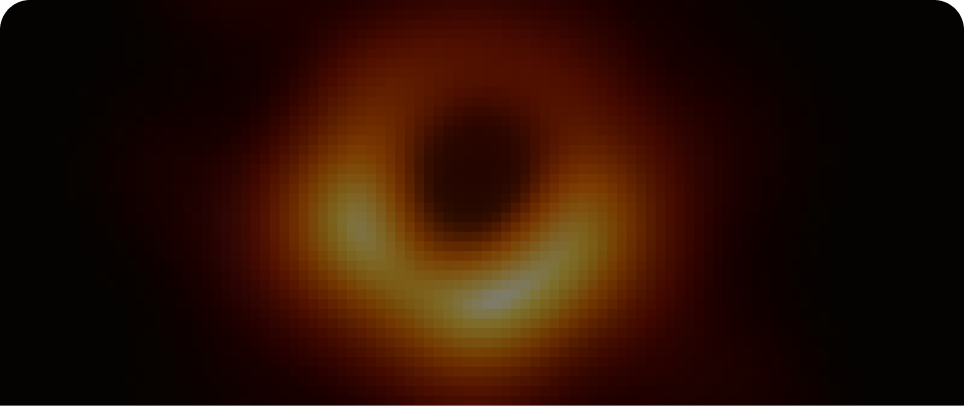
Event Horizon Telescope
Event Horizon Telescope

The Event Horizon Telescope is an international collaboration capturing images of black holes using a virtual Earth-sized telescope. Learn More .
What is EHT
A long standing goal in astrophysics is to directly observe the immediate environment of a black
hole with angular resolution comparable to the event horizon.
Such observations could
lead to images of strong gravity effects that are expected near a black hole, and to the direct
detection of dynamics near the black hole as matter orbits at near light speeds. This capability
would open a new window on the study of general relativity in the strong field regime, accretion and
outflow processes at the edge of a black hole, the existence of event horizons, and fundamental
black hole physics.


The EHT is an international collaboration that has formed to continue the steady long-term progress on improving the capability of Very Long Baseline Interferometry (VLBI) at short wavelengths in pursuit of this goal. This technique of linking radio dishes across the globe to create an Earth-sized interferometer, has been used to measure the size of the emission regions of the two supermassive black holes with the largest apparent event horizons: SgrA* at the center of the Milky Way and M87 in the center of the Virgo A galaxy.

In both cases, the sizes match that of the predicted silhouette caused by the extreme lensing of light by the black hole. Addition of key millimeter and submillimeter wavelength facilities at high altitude sites has now opened the possibility of imaging such features and sensing the dynamic evolution of black hole accretion. The EHT project includes theoretical and simulation studies that are framing questions rooted at the black hole boundary that may soon be answered through observations.
EHT IN THE MEDIA

Images of a black hole reveal how cosmic beasts change over time
September 23, 2020

Images of a black hole reveal how cosmic beasts change over time
September 23, 2020

Images of a black hole reveal how cosmic beasts change over time
September 23, 2020


powered by



